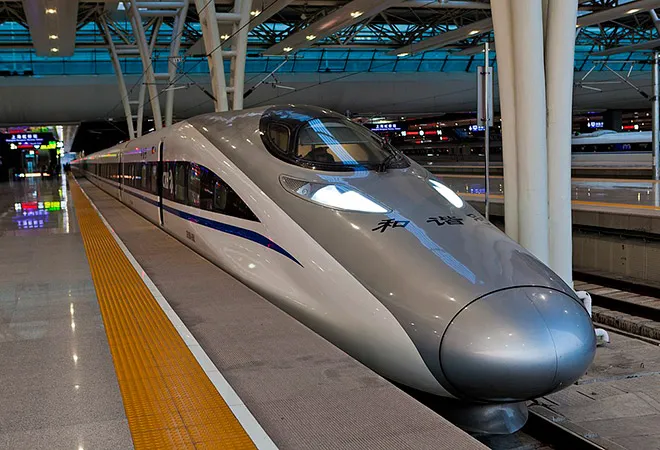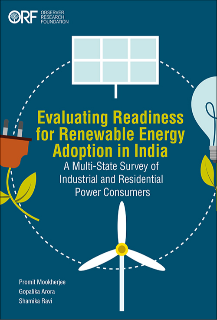
Contemporary globalisation and corresponding development discourses have come to capture a lot of attention when looking at the Sino-Indian relations. Despite bilateral associations steeped in history and geographical contiguity, there has been a physical and cultural disconnect between China and India. Although the relations between the two countries have been complex over the years, the need for achieving SDGs (Sustainable Development Goals 2015) as well as trade and soft power can help forge closer developmental partnership in the future.
Both countries, especially India, are at the crossroads of defining their development trajectories. Similarities exist in terms of new systems of governance adopted around the same period, growth associated with urbanisation and increasing consumption, and concerns for environmental destruction as a result of unbridled growth. At the same time, geopolitical and geo-economic tensions surfacing from time to time are causing protracted distrust, political disagreements and military buildups. In this background, it is important to look into the common grounds for positive symbiotic interactions between these two countries so as to work on the trade-off between ‘growth fetishism’ and attainment of broader sustainable development goals.This would translate into strong bargaining power of large developing nations at international forums such as WTO and BRICS, and simultaneously indulge in soft power activities beyond the aspects of only culture and government.
The salient features in the SDGs that highlight the potential for Sino-Indian collaborations include:
| SDG 2 (Zero Hunger) |
Correction and prevention of trade restrictions and distortions in the world agricultural markets. |
| SDG 3 (Good Health and Well-being) |
Providing access to affordable essential medicines and vaccines, in accordance with the Doha Declaration on the TRIPS Agreement, especially for developing countries. |
| SDG 14 (Life below Water) |
Following WTO fisheries subsidies negotiation to prevent illegal, unreported and unregulated fishing. |
| SDG 17 (Partnership for the Goals) |
Promoting a universal, rules-based, non-discriminatory and equitable multilateral trading system and realizing timely implementation of duty-free and quota-free market access on a lasting basis. |
Contemporary growth theories focus on the creation of more complex economies that are driven by knowledge in order to cope with the globalised market. Asian countries, especially India and China, are increasingly trying to expand their product space with more complex goods such as machinery, pharmaceuticals, etc. Bilateral trade between China and India reached a historic high of about USD 84 billion in 2017-18 despite political and diplomatic frictions.
In eastern India, Chinese companies have been stepping up investments across the five states of West Bengal, Jharkhand, Chhattisgarh, Bihar and Odisha. Both nations are hopeful that the expansion will continue as trade and investments increase and there is a joint effort to work through the sensitive aspects of bilateral ties leveraging on individual comparative advantages.
Nevertheless, India’s trade deficit continues to remain high with almost half of it lying with China. India has been urging China to permit Indian companies access into Chinese IT and pharmaceutical sectors.The biggest dilemma here is that although the project exports under execution from China is valued at approximately USD 63 billion, the FDI from China is only about USD 5 billion. In the context of the trade deficit it is even more important to have closer look at the impact of Chinese imports on the value chains. Both the nations can immensely benefit by collaborating in the fields of Artificial Intelligence (AI), Internet of Things (IoT) and other forms of technology.
“In today’s global information age, victory often depends not on whose army wins, but on whose story wins.” – John Arquilla rightly summarises the importance of soft power in contemporary times. According to a report, ‘The Soft Power 30’ (2018) by Portland, Facebook and USC Centre for Public Diplomacy, a soft power index was devised for various nations based on six major verticals of Education, Government, Culture, Digital, Engagement and Enterprise. Neither does India and China feature in the top performers for such indices nor does it show any significant improvement in rankings over the years. This calls for a collaborative structural transformation for developing and using soft power in both the nations. Such an agenda can be fueled by the fact that the recent propaganda of core social values in China such as prosperity, democracy, civility, harmony, etc. are very dear to the people of India and further interactions will foster societal and economic convergence.
According to Union Tourism Minister KJ Alphonse, “The number of Chinese tourists visiting India in 2015 was 2,06,322. While the figure rose to 2,51,313 in 2016 (only 2.85% of the total foreign tourists in India that year), it saw a marginal dip in 2017 with 2,25,482 Chinese tourists arriving in the country.” India faces a huge deficit in the category of tourism as well where despite e-visa facilities, expensive campaigns and new tourist destinations, only 2.40 lakh Chinese tourists visited India last year (2017) against 14 lakh Indians visiting China. Tourism and culture are mainly governed by civilizational linkages that emerged due to spread of Buddhism, the role of national media and popularity of highly acknowledged Bollywood movies in China, amongst others. Buddhism spread north from India to Central Asia and reached China by the middle of the first century B.C. Buddhism later became the bedrock for diplomatic relations between India and China as the Panchasheel or the Five Principles of Peaceful Coexistence were signed in 1954. Dangal on the other hand, by virtue of being a socially relevant and engaging story that filled the quality vacuum in Chinese domestic films industry, turned out to be a phenomenon in China with earnings more than double of that in India.
Connectivity projects, respecting sovereignty and territorial integrity on a win-win basis, following international norms can help expedite interactions between the two countries. For example the K2K (Kolkata to Kunming) bullet train, funded by, say, multilateral agencies like the AIIB or ADB with equity participation of the member countries can be one such driver. From no leadership visits for about 30 years before 1988, PM Modi and President Xi have met 11 times in the past three and a half years. Many exchanges have taken place at level of cabinet ministers, NSAs, SRs, trade delegations, scholars and at P2P level. However, for a quantum jump, transformational steps and mutual trust are necessary given the fact that India and China are poised to play a pivotal role in the 21st century global scenario.
The views expressed above belong to the author(s). ORF research and analyses now available on Telegram! Click here to access our curated content — blogs, longforms and interviews.




 PREV
PREV


